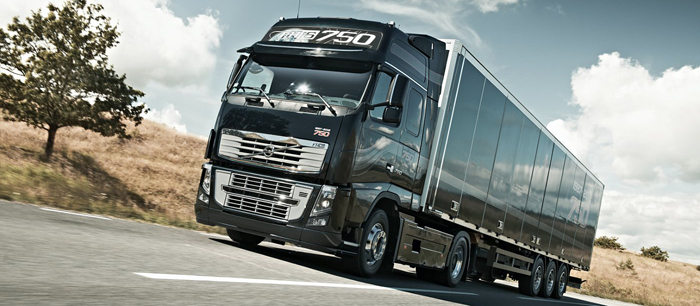How is Europe to meet its tough climate targets as transport needs increase? Although it may initially seem strange, larger and more powerful trucks may be one of the answers.
The EU has decided to reduce emissions of greenhouse gases from the transport sector by 20 percent between 2008 and 2030, and by even more in the longer term.
 At the same time, transport needs continue to increase and, above all, it is the heavy freight sector that is increasing most. In other words, what we are up against is a complex challenge.
At the same time, transport needs continue to increase and, above all, it is the heavy freight sector that is increasing most. In other words, what we are up against is a complex challenge.
“In order to succeed, a number of different measures will be needed such as better logistics, more efficient engines, more fuel-efficient driving techniques and new fuels. But one of the solutions may also be larger and more powerful trucks.” This is the opinion of Anders Ahlbäck, Project Manager in the Area of Advance for Transport, Chalmers University of Technology.
Getting more done with less fuel
The basic principle is simple: with larger and more powerful trucks, more freight can be carried by fewer vehicles, which in turn reduces fuel consumption and climate impact in relation to the transport work being undertaken.
The fact is that demands on more efficient transport have for many decades driven development in the direction of increasingly powerful trucks. In the mid-1970s a power output of 350 hp was regarded as high. Today you would need to add another 100 hp to reach the average for a truck on European long-haul assignments. For operations in very hilly terrain and in high-altitude conditions, really high performance is needed to be able to quickly transport food and other fresh goods or to haul heavy loads such as wind-power stations, timber, ore or machinery. For this sort of demanding operation, there are trucks like the Volvo FH16 with power outputs of up to 750 hp.
Lower climate impact
“What is remarkable is that during the same period, fuel consumption and climate impact have dropped by an average of about 40 percent, while emissions of nitrogen oxides and particles have been cut by more than 90 percent,” said Hayder Wokil, Product Manager at Volvo Trucks.
But more still remains to be done. Volvo Trucks works actively and continuously to reduce fuel consumption and carbon dioxide emissions from its trucks. And if more countries in Europe decided to follow Sweden’s and Finland’s example and allowed truck rigs of up to 25.25 metres in length, one in every three semi-trailers on Europe’s roads would no longer be needed – at least in theory. In actual fact, what is probably more likely is that it will be easier to meet expanding transport needs without adding more carbon dioxide to the atmosphere.
“Longer and more powerful trucks are of course not the only solution to the transport sector’s climate problems, but they are one of many answers. Here at Volvo Trucks we see it as our mission to pursue development and to make truck transport’s environmental footprint as small as possible. Trends thus far show that a smaller climate impact and more efficient transport really do go hand in hand,” said Hayder Wokil.
| 1970-1975 | 330 hp |
| 1975-1980 | 375 hp |
| 1980-1985 | 400 hp |
| 1985-1990 | 450-475 hp |
| 1990-1995 | 500-525 hp |
| 1996-2006 | 550-660 hp
|
| 2009-2011 | 700-750 hp
|